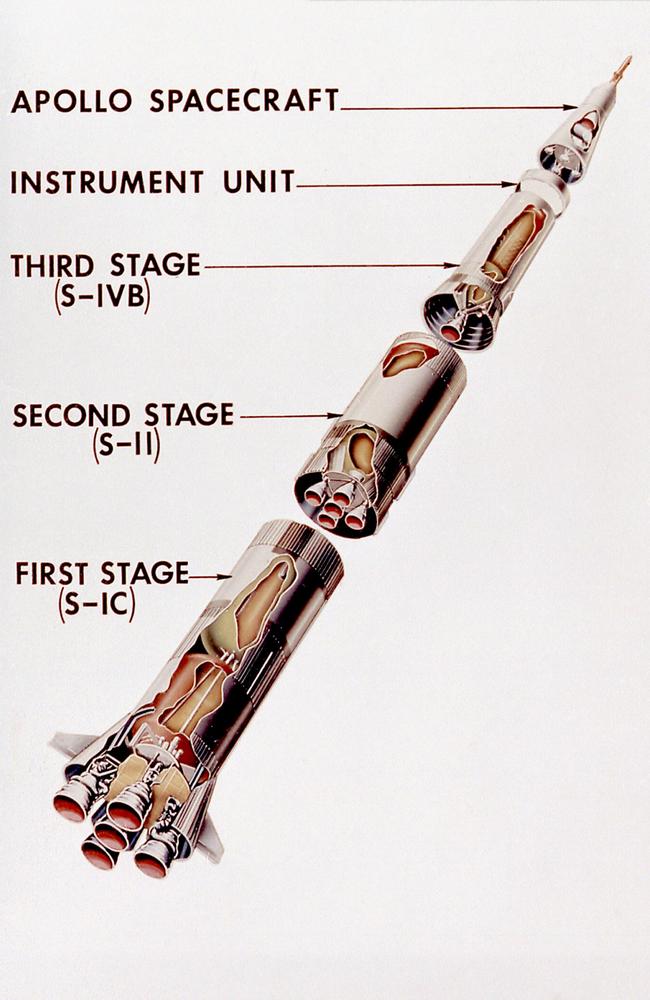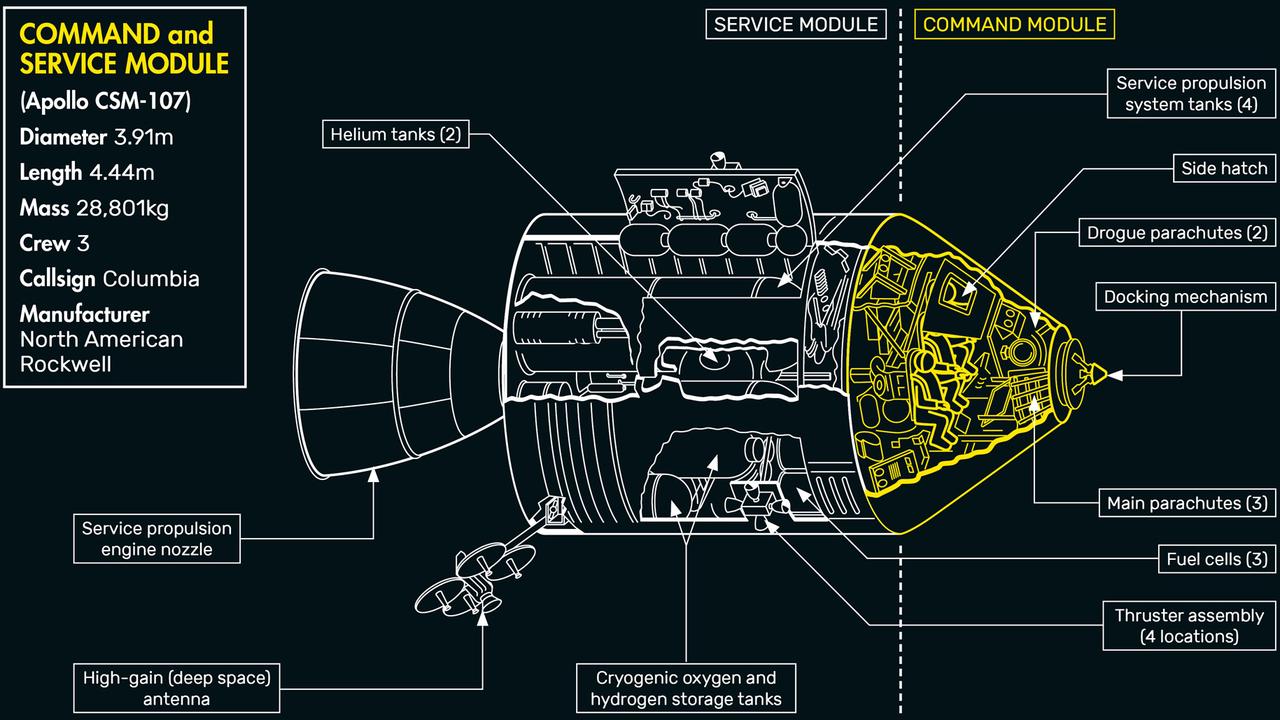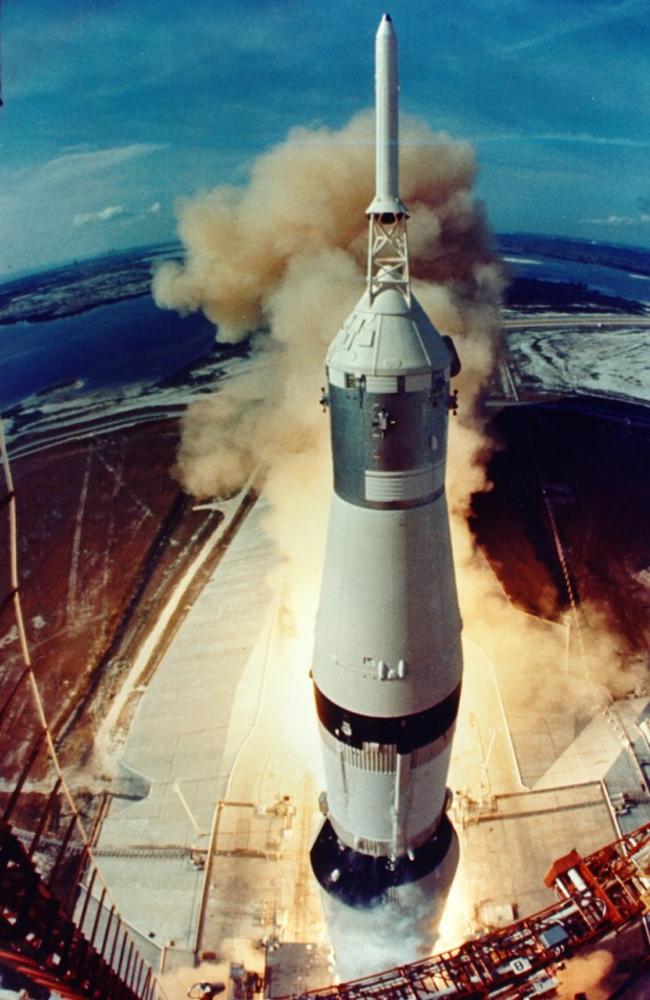The powerful Saturn V rocket was built by NASA to send Apollo 11 — and humans — to the moon
NASA built a special-purpose rocket called Saturn V to launch man into orbit and walk on the moon. It was the most powerful of its kind ever built. We take a look at all its components

READING LEVEL: GREEN
The Saturn V was a massive rocket built by NASA to send humans to the moon.
It was called a Heavy Lift Vehicle and was the most powerful rocket that had ever flown successfully. The Saturn V was used in the Apollo space program in the 1960s and 1970s.
The rocket was developed at NASA’s Marshall Space Flight Centre in Huntsville, Alabama and its job was to launch the Apollo spacecraft, which housed the astronauts and was attached to the top of the rocket, into space.
The first Saturn V that launched with a human crew was Apollo 8. On this mission, astronauts orbited the moon but did not land. On Apollo 9, the crew tested the Apollo moon lander by flying it in Earth orbit without landing.
On Apollo 10, the Saturn V launched the lunar lander to the moon. The crew tested the lander in space but did not land it on the moon.
In 1969, the Saturn V was used to send Apollo 11 to land on the moon.
Saturn V rockets also made it possible for astronauts to land on the moon on Apollo 12, 14, 15, 16 and 17.

Saturn V had three stages. Each stage would burn its engines until it was out of fuel and would then separate from the rocket. The engines on the next stage would then fire and the rocket would continue into space.
Stage 1: Had the most powerful engines, since it had the challenging task of lifting the fully fuelled rocket off the ground to an altitude* of about 68km. Used liquid oxygen and kerosene
Stage 2: The second stage carried Saturn V almost into orbit. Fuelled by liquid hydrogen and liquid oxygen
Stage 3: This final stage placed the Apollo spacecraft into Earth’s orbit and pushed it towards the moon. The first two stages fell into the ocean after separation. The third stage either stayed in space or hit the moon. Stage three was fuelled by liquid hydrogen and liquid oxygen.
Sitting at the top of Saturn V was the Apollo spacecraft, which had four components.

1. Lunar module
The lunar module was the part that actually landed on the moon.
It was only 7m tall and 9m wide and had two sections: the upper ascent* stage and the lower descent* stage.
The upper stage carried astronauts Neil Armstrong and Buzz Aldrin, equipment and an ascent rocket engine.
The lower stage had the landing gear, lunar surface experiments and the descent rocket engine. When the mission was over, the lower stage provided a launch platform and was left on the moon. The upper stage flew back to reattach to the command module and was left behind in space after the three astronauts were reunited.
2. Service Module
This contained many of the Apollo spacecraft’s important systems including oxygen tanks, fuel cells, batteries and engines. Once the spacecraft separated from the final stage of the Saturn V, the service module provided the thrust or power needed to put the spacecraft into orbit, adjust the spacecraft’s route, pitch, roll and yaw (the rotation about the three axes of the spacecraft).
This module was left behind just before re-entry into the Earth’s atmosphere.

3. Command Module
This is where the astronauts travelled for most of the moon mission. The command module housed all the controls and dashboard used to monitor the spacecraft.
They travelled back to Earth in the command module, flown by Collins, and re-entered the atmosphere with its heat shield facing the planet, to defend against the high temperatures caused by atmospheric friction*.
4. Escape Rocket
This tower-shaped structure looked like a small rocket and was there to give the astronauts a quick escape in the case of a launch failure by pulling the command module away from the launch vehicle.

FAST FACTS ABOUT THE SATURN V ROCKET
- Name: The V in the name is the Roman numeral five.
- Height: 111m tall (about the height of a 36-storey building)
- Weight: Fully fuelled for lift-off, the Saturn V weighed 2.8 million kilograms, which is the same as about 400 elephants.
- Power: The rocket generated 34.5 million newtons* of thrust at launch
- Cost: The cost of the program was estimated at more than $25 billion, which would be more than $100 billion today.

THE NEXT POWERFUL ROCKET
NASA announced in June this year that it had made good progress in building the core stage to power its next-generation heavy-lift rocket on new missions to the moon.
NASA and its lead contractor Boeing have assembled four-fifths of the massive stage needed to launch the Space Launch System (SLS) and the Orion spacecraft.
The US hopes the SLS and Orion spacecraft will be used to send the first woman and the next man to the moon by 2024.
The core stage is currently 58m long, or the size of 12 cars parked end-to-end, making it the largest rocket stage NASA has ever built since the Saturn V stages sending humans to the Moon nearly 50 years ago.
When it’s finished, the core stage will tower at about 65m and includes two propellant tanks and four RS-25 engines.
GLOSSARY
- altitude: height of an object above the ground or sea level
- ascent: climb
- descent: drop or go down
- atmospheric friction: occurs when re-entering Earth’s atmosphere from space and is the main cause of shock-layer heating
- newtons: a unit of force
EXTRA READING
Part 4: Training for the Apollo 11 mission
Part 6: The launch and journey to the moon
QUICK QUIZ
- Which mission was the first to launch a human crew with a Saturn V rocket?
- How many sections did the Apollo 11 craft have?
- Which module did the Apollo 11 astronauts travel in for most of the trip?
- What does the V in Saturn V stand for?
- How heavy was Saturn V at lift-off?
LISTEN TO THIS STORY
to come
CLASSROOM ACTIVITIES
Refer to the accompanying 50th Anniversary of the Moon Landing classroom workbook with 25 activities. Can be purchased for $5 including GST at https://kidsnews.myshopify.com/products/moon-landing
HAVE YOUR SAY: If you could choose which module to fly in on a mission to the moon, would you choose the lunar module or the command module?
No one-word answers. Use full sentences to explain your thinking. No comments will show until approved by editors.

